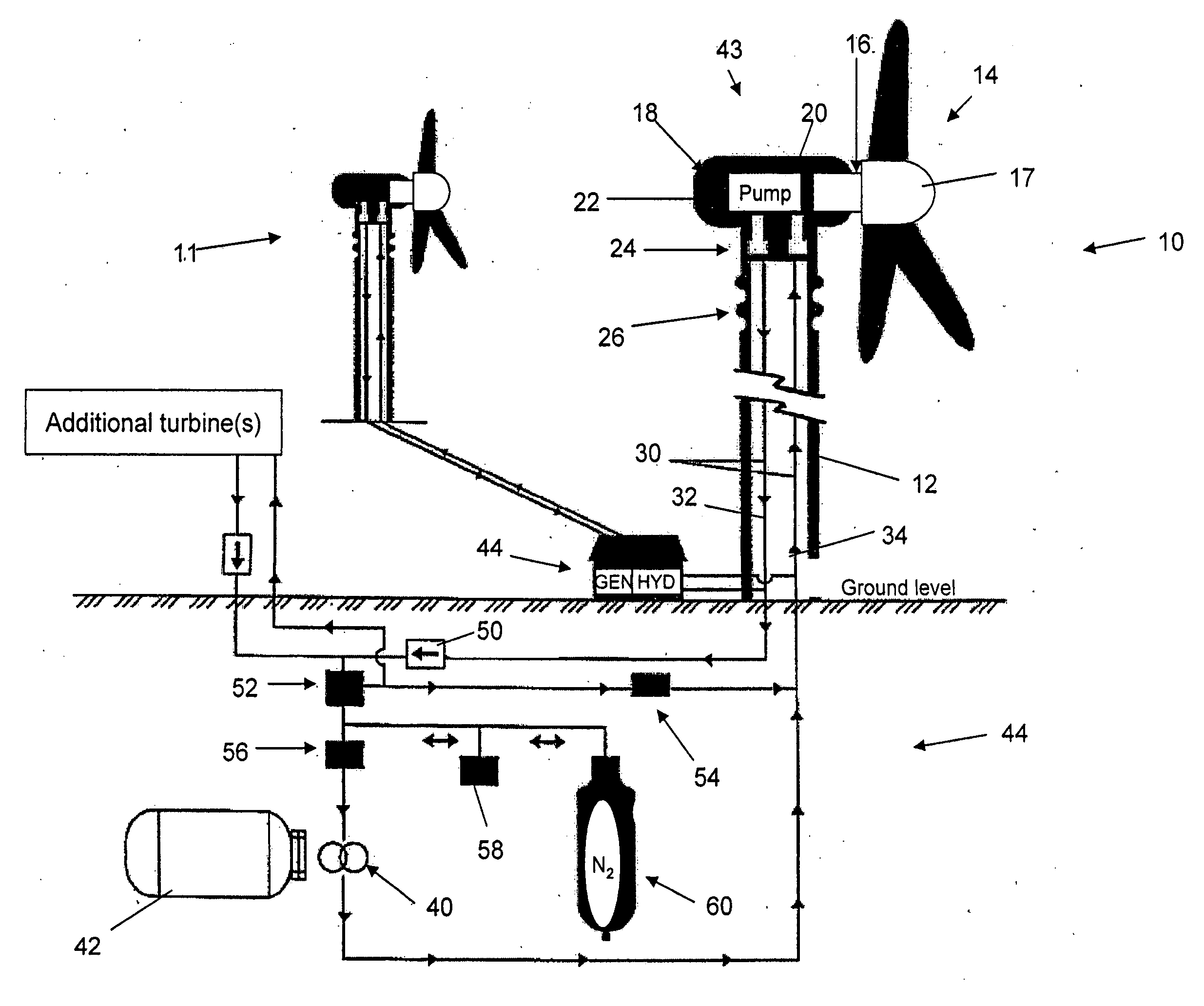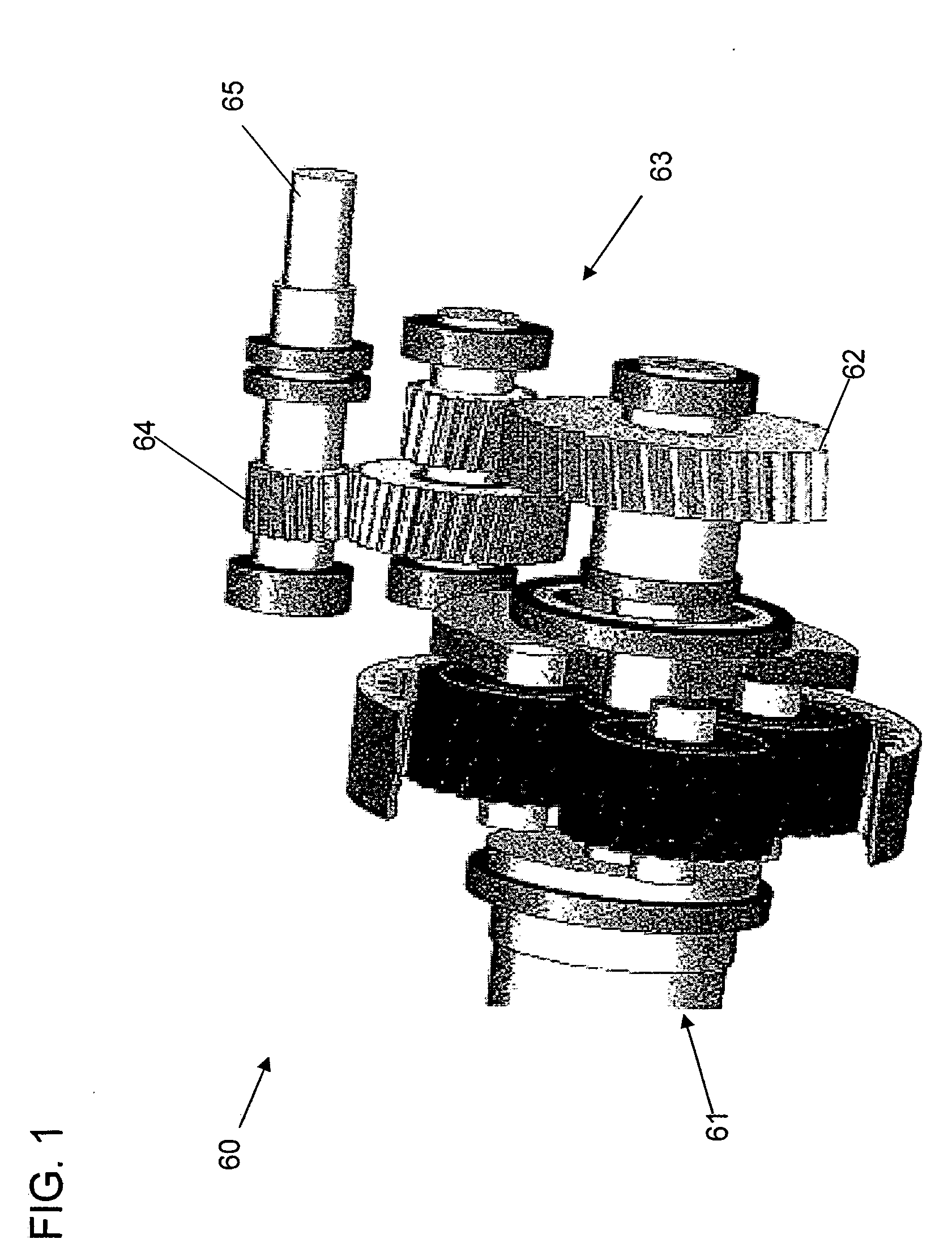Hydro-wind power generating turbine system and retrofitting method
- Summary
- Abstract
- Description
- Claims
- Application Information
AI Technical Summary
Benefits of technology
Problems solved by technology
Method used
Image
Examples
Embodiment Construction
[0017]As shown in FIG. 2, there is provided a wind turbine system 10 in accordance with one embodiment of the present invention. The system includes a tower 12 having a blade and / or propeller arrangement 14 including at least two and typically three blades mounted on a blade shaft 16 with a hub member 17, wherein the blade shaft is mechanically coupled to a hydraulic pump 20 maintained within nacelle 18. Hydraulic pump forms part of the hydraulic transmission system of the present invention. Hydraulic transmission system includes an above-ground transmission component 43 and a ground level transmission component44, with above-ground transmission component including the pump 20 and reservoir 22 with an appropriate suction line between the two as is known in the art.
[0018]The pump 20 is a variable displacement pump, such as a radial piston pump, wobble plate pump, swash plate pump or a bent axis pump, for example, and the pump works in a rotary fashion, whereby it develops a partial v...
PUM
 Login to View More
Login to View More Abstract
Description
Claims
Application Information
 Login to View More
Login to View More - R&D
- Intellectual Property
- Life Sciences
- Materials
- Tech Scout
- Unparalleled Data Quality
- Higher Quality Content
- 60% Fewer Hallucinations
Browse by: Latest US Patents, China's latest patents, Technical Efficacy Thesaurus, Application Domain, Technology Topic, Popular Technical Reports.
© 2025 PatSnap. All rights reserved.Legal|Privacy policy|Modern Slavery Act Transparency Statement|Sitemap|About US| Contact US: help@patsnap.com



